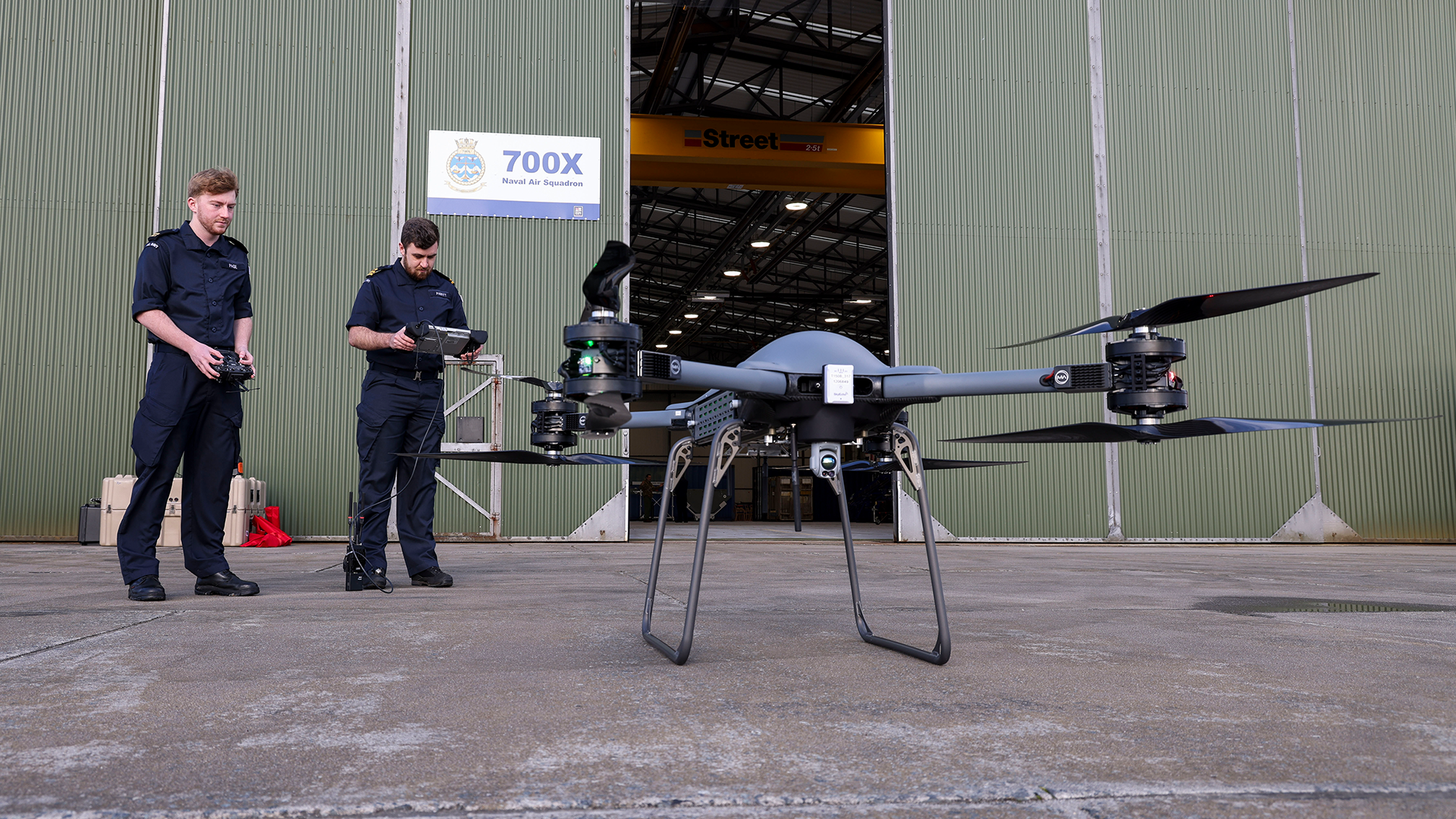
Will the Strategic Defence Review really work in practice for the Royal Navy?

There has been plenty of metaphorical ink spilt this week in analysing and summarising the Strategic Defence Review, announced and published by the Government on Monday.
In particular, there has been extensive coverage on BFBS Forces News and an excellent piece by my old friend 'Sir Humphrey', writing as Pinstriped Line, which I would highly recommend.
I am not seeking to reheat any of this material, but rather to turn over a few selected stones and see what is lurking thereunder.
And there are a few hidden gems in the SDR document that are worth considering the deeper meaning of as they relate to the Royal Navy.
Regular readers of my musings will know that I am a bit of a geek for capability management and acquisition in defence.
I make no apologies. It is a much-maligned area of defence and one that frankly requires greater expertise in the system to really understand how to get things done.
And getting things done – and getting them done quickly – is a key element of this SDR.
There are some ambitious timelines, to put it mildly.
The SDR talks a good game about ridding the system of unnecessary red tape and transitioning to a mindset of action and delivery.
Let's see it and the resources to enable the activity!
Go high and low
The purpose of defence acquisition is to turn taxpayers' money into military capability.
To make the budget allocated to the maritime domain stretch further, the SDR calls for a "high-low" mix of equipment and weapons that exploits autonomy and digital integration.
It demands a cheaper, but more effective fleet.
But what drives cost in maritime platforms?
It is generally the survivability requirements and the weapon systems.
Firstly, survivability: do we want our sailors to be able to fight for our ships, or are we prepared to accept that the ships are increasingly expendable?
Removing much of the survivability will save plenty of money and free up sailors, but that changes the calculus of when to give up the ship.
Lean crewed and autonomous vessels have much to recommend them, but they also lack the inherent flexibility, adaptability and resilience that a ship full of sailors brings.
Many questions to answer
Do we need such ships to be able to replenish at sea?
How will they protect themselves while transiting a chokepoint?
What activities will they need to be able to do concurrently?
And so on.
None of these are insuperable, but they need addressing and for a different way of thinking about maritime platforms to be applied.
And I say maritime platforms, not ships, because that's what it really means.
Thinking of such vessels, not as we might have traditionally thought of His Majesty's ships, but as something more utilitarian and expendable.
Autonomy and AI should fit the role
For the weapon systems, especially those that are defensive in nature, we need to think carefully about what constitutes "good enough".
There is a curious mix of language in the SDR between the pejorative discussions of "exquisite capability", being procured at the expense of "hollowing out of the Armed Forces' warfighting capabilities", whilst elsewhere hailing cutting-edge exploitation of emerging technology.
Horses for courses perhaps, but we should be wary of thinking that cheap and plentiful is always the answer.
We can flood the North Atlantic with robot boats with low-cost hydrophones, but if they have to bump into a submarine before hearing it, then we're wasting our time.
We need to be clear about what the pacing threat is and what is needed to defeat it, being innovative and harnessing opportunities presented by technology in the process.
Of course we should be looking to autonomy and AI to help us build up mass into our maritime forces, but it has to be fit for the role.
No matter how many versions of me were running a marathon, we wouldn't beat Sir Mo Farah in the race!

Use of drones on aircraft carriers
The same is true of what is launched from our aircraft carriers.
Again, a mix of crewed and uncrewed platforms is called for and there is a demand that progress is accelerated.
In reality, there is a long way to go before we are launching coordinated strike packages of F-35s and autonomous 5th Gen wingmen, combined with waves of one-way suicide attack drones and cruise or ballistic strike missiles.
Some elements of this are closer than others.
We've seen that it's perfectly feasible to synchronise strikes using plentiful drones and hybrid mixes of missiles. Let's get such offensive packages into our Carrier Strike Groups, pronto!
Supersonic, low-observable strike drones flying in coordination with 5th Gen fighters are another matter, but let's start the process.
There are a number of uncrewed air systems on board HMS Prince of Wales as I write, deployed on Op Highmast.
It will be fascinating to understand what their utility has been and what lessons have been learned about integrating drones and F-35s on a single flight deck.
Such experimentation needs to be pursued and exploited with alacrity, and then the results used to transition such capabilities, where they are shown to be useful, into the mainstream of the investment programme.
Digitasation: an agile and open approach
At the same time, we can get on with the business of digitisation.
The idea of a systems-of-systems approach to the delivery of capability is now conventional policy.
The Navy is leading the way here with the Mine Hunting Capability (MHC) programme, but there are other initiatives across defence, such as the RAF's Nexus programme, which are also excellent examples of enablement through data.
There will be a temptation for defence to see the proposed digital targeting web as one big monolithic programme, a contract to be handed to a major consortium, which will start building a massive digital walled garden with proprietary data standards and a locked-in monopoly.
Such an approach would be a mistake.
MHC and Nexus show that such data integration and exploitation is possible across a system-of-systems, using AI and autonomy as enablers, with open standards and a commercially flexible technology.
A simultaneously more prudent and ambitious strategy would be to take what already works and iterate out rapidly from there.
This is a big programme where a genuinely agile and open approach is exactly the right one.
And importantly for the Navy, this needs to be fit for the bandwidth-limited and denied environment of the maritime domain.
There is no point building a massive data cloud that is only useful if you have an always-on gigabit connection.
We need to build this capability to be able to fight effectively in the digital dark when required.
Availability vs Readiness
Overall, the SDR demands that the integrated force improve its readiness to fight and win in a war.
This really matters to the Navy.
For three decades now, the tip of the spear, that is to say the number of ships in the fleet, has been prioritised at the expense of the sustainment and support enablers.
If you think the tip of the spear is the only important component of that weapon, then you don't understand how spears work!
Bluntly, activity to demonstrate productivity in the form of ships at sea has been prioritised over readiness to fight.
To make the fleet ready for war, this hollowing out needs to be addressed.
That means prioritising maintenance, spares, munitions, personnel and training over fleet activity and presence.
Adjusting the balance
It's not either/or, but the balance needs to shift.
Some of this will be addressed by the recapitalisation of the ageing frigate force, but the support solutions for the new capabilities need to be properly implemented and sufficient headroom given in the investment programme budgets to rapidly spiral the capabilities from there.
And we know how to do this.
I once asked a Danish officer how they kept their ships in such good condition.
He laughed and said that they took our doctrine, read it and then actually did what it said.
"Perhaps you should try that?" he suggested.
Perhaps we should, but that will take an acceptance that we need to dedicate more time and resources to the unglamorous business of engineering and other aspects of logistics support, so that we have a fleet that is playing its part in an integrated force, truly ready to fight and win.
Si vis pacem para bellum! (If you want peace, prepare for war!)
Commodore (Ret'd) Steve Prest is an independent consultant and adviser.
In almost 30 years of service, he garnered extensive experience delivering military capability for the UK Armed Forces.
He is an expert in capability and acquisition and has been the senior responsible owner of several major defence programmes.
He can be found on X as @fightingsailor.









